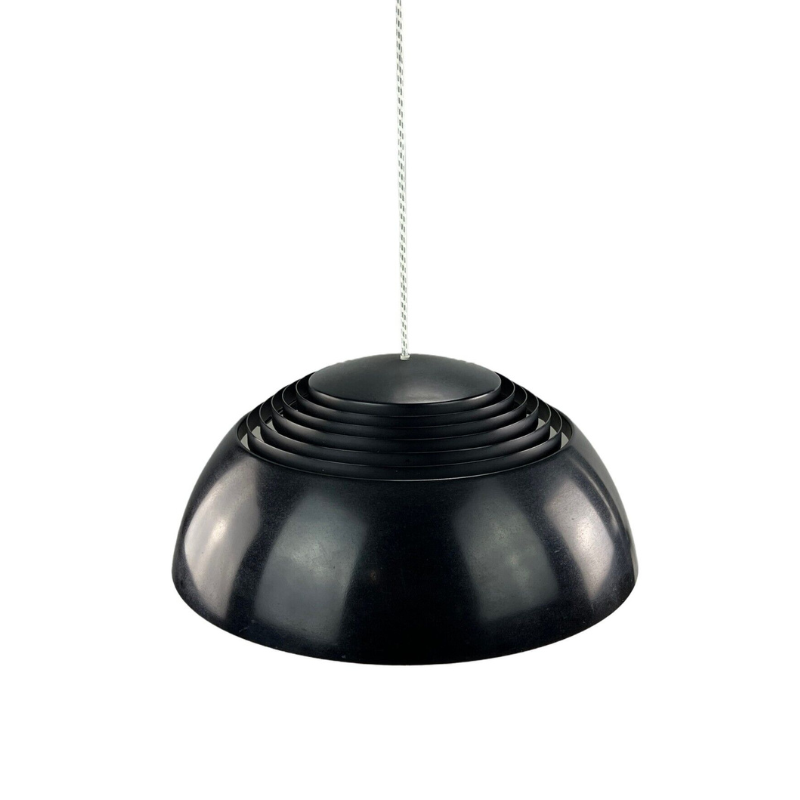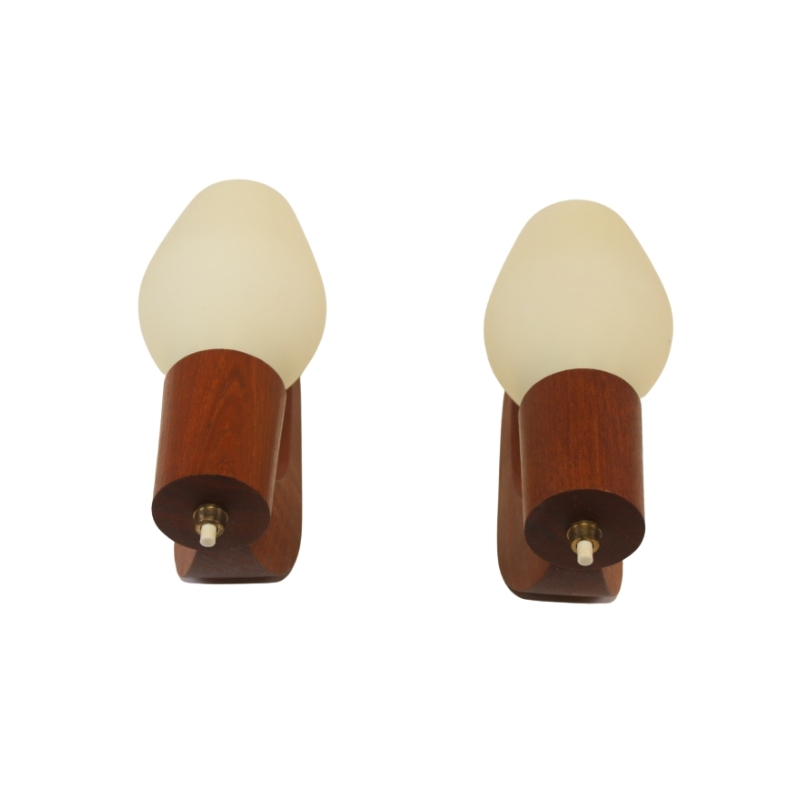Why would someone use that phrase but at the same time indicate that the piece is signed with the same name?
Is this a way to say they don't know if it's authentic?
http://cgi.liveauctions.ebay.com/ws/eBayISAPI.dll?ViewItem&item=230261191368
In my opinion, when it comes...
In my opinion, when it comes to modern furniture this phrase is mostly a clue that the item is not orininal or the origin is unknown/unclear.
But with older pieces it's a different thing. In pre-mass-production times copying or imitation had different value, hence "in the style of" might be desirable simply because originals are too rare to be affordable.
What I'm saying is a quick recall of the earlier post "The knockoff Debate" (see link!)
http://www.designaddict.com/design_addict/forums/index.cfm/fuseaction/th...
Either they don't know whether
or not it's authentic but more then likely they have no idea relative to the conventions of the English language. One can not have it both ways. It is either an Eames chair or it is not. It can be of the Eames era which seems to be a catch-all phrase already much discussed here, much like it can be "In keeping with the (fill in designers name here) school of design, or architecture etc.
In other words, something can be in the manner of say the DaVinci (school, style, fashion) of art. Or it can be by DaVinci. The former implies work by a student of DaVinci, the latter is obviously.... by DaVinci, but not both.
Agree with the points made in both posts
but in this listing, they actually say "Signed ANOLL" - that's what is confusing to me. If it's signed with the artist's name, then it is "by" that artist isn't it? I guess I'm wondering if there's a case where the artist's name is on a piece that they are not actually the designer of - perhaps as a producer?
Outright counterfeit is of course the exception to the above, and I wonder if that's the exception that the seller is covering
I would agree with
your noted exception. It seems like this seller is trying to cover their backside as they pass off perhaps something that is slightly less then authentic. I still say you can't have it both ways, just like one can't be a little bit pregnant. It is either by a particular individual or it is "in the style of". One or the other, but not both.
2 different things
There are two different things going on here.
First, that particular piece is being offered from Wright's auctions. That auction house is highly reputable and well regarded. They have a staff that verifies authenticity. In this instance, for that chalice, there must be something funny about the signature and so they are hedging their bets by using the phrase "in the manner of". It is very rare that you see a signed piece not being attributed to the signer, unless, as I said, something's fishy.
Second, in the normal course of the "traditional" antique business there are many phrases dealers use to denote authenticity.
"In the style of. . ." followed by a designer or maker's name means that the piece is known to not be made by whomever they are citing. The piece resembles the original (and sometimes you really have to use your imagination to see the resemblance), but it is obviously not by the well-known maker, i.e. "chinese Chippendale style chair".
"In the style of . . . " followed by a king or queen's name means the piece was made in the period associated with whatever monarch they are citing. Many, many times, back in the day, the actual person who made the piece did not sign his name. Sometimes, however, they did and that adds alot of value to the highboy or whatever.
"In the manner of . . ." means that there is some suggestion that the piece could have been made by the maker, it's very close, but there's no signature, no marks, no tags, etc., so it's hard to say and not kosher to attribute the piece to the original designer if you're not 100% sure.
"after. . ." means the dealer has some knowledge of the provenance (background)of the piece and it was made by a student or apprentice of the original maker.
Hope that helps understand "trads" terminology.
forgot one thing
I forgot to specify one thing regarding the whole monarch thing. If the dealer is absolutely sure the piece was made in the proper period by studying the joinery, saw cuts, etc., they can leave off the word "style" and just say "William and Mary chest on stand" or whatever.
I think all of these terms that "trads" use don't really apply when speaking of well-documented Modernist furniture. I agree with you that it either is or it isn't. And if it isn't, it can be vintage or it can be new, but it's still a copy.
Since prices for his work hav...
Since prices for his work have skyrocketed, Alexandre Noll pieces brought to auction houses (the 'A Noll' signature is one that could easily be duplicated) are being looked at with ever increasing scrutiny regarding provenance/authenticity.
One factor that influences such caution is a significant traffic increase in Noll goods auction houses are seeing in a production that folks agree should have been, at best, a fairly limited supply. That doesn't mean a signed piece listed as 'in the manner of' is not authentic, but it might be a hint to those interested that they might want to get an expert opinion on a given item before they sell the farm to buy.
hudsonhonu, those are good points
makes a lot of sense - that's what I love about this forum, you people are incredibly informed about these kinds of details that might not exactly be intuitive (I'd never know what the traffic in Noll items at auction is to know that it had been suspiciously increasing).
Makes me wonder about a piece I picked up this weekend, a teak S&P set - should I start a separate thread for that? I'm really new here (only since yesterday) but I think I've found a new web home - but not sure yet of the culture here, whether it's encouraged to start lots of new threads for each new topic, or... ?
More than likely I'll just start a new thread - it will have Stocksdale in the title.
Using the term "in the...
Using the term "in the manner of" for an item with an actual signature of the designer it's supposed to be "in the manner of" is a clear indication that the seller is acknowledging the possibility that it is a fake. In this case, since it is Wright, I think they are just being cautious, rather than thinking it is a fake...otherwise I doubt they would tarnish their image...they don't need to sell fakes.
As usual, it is always buyer beware, and this will be reflected in the hammer price at auction.
I've seen this done on occasion...a signed and numbered Moore bronze offered as "in the manner of", as exact copies can be cast with little way to tell, unless every numbered piece can be located and verified as authentic....making all others proven fakes.
The "usual" use of the term "in the manner of" is not to suggest it "could" be by the designer/maker in question (that requires the much stronger term "attributed to" ), but to simply associate something of unknown or not famous origin to a famous name...either to give an idea of the style, or even worse...to increase the perceived value of something by simply including a famous name to the listing.
"in the manner of" is not a term generally required by "the trade", or anybody knowledgeable (collector), as if it is in the "manner" or "style" of...then you don't need to be told.
"In the manner of" is at best helpful to the uninformed (although an uninformed buyer is unwise to rely on being informed by a seller), and at worst, condescending and even misleading marketing. Which is why I simply don't like the term.
If you need any help, please contact us at – info@designaddict.com









